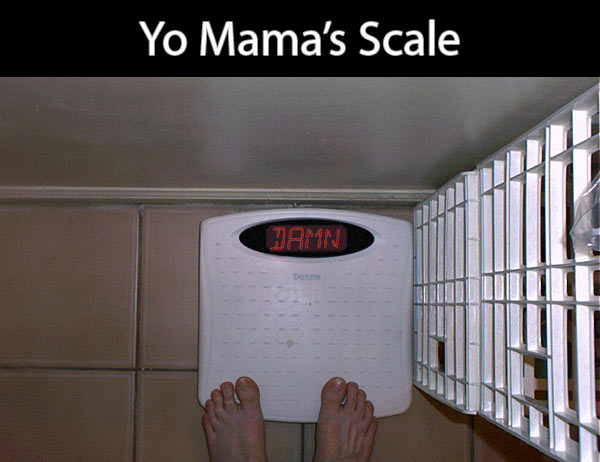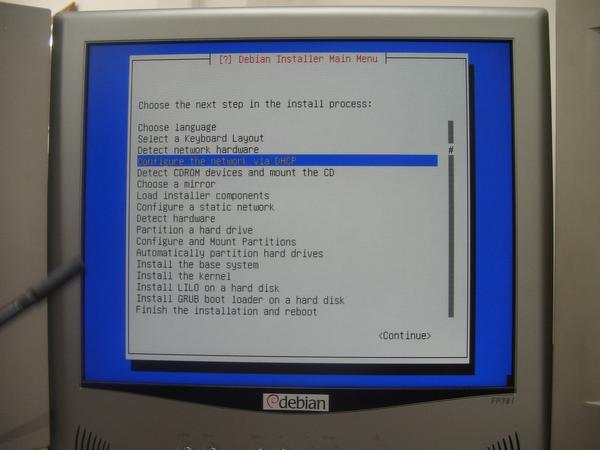I had incredible problems trying to get m3u playlists working. Basically the machine would crash if I tried to load a list of any decent length.
Solution: upgrade to firmware 1.30
Note: it seems m3u files have a 32768 character limit
I guess this is a Tiny House blog now
I had incredible problems trying to get m3u playlists working. Basically the machine would crash if I tried to load a list of any decent length.
Solution: upgrade to firmware 1.30
Note: it seems m3u files have a 32768 character limit

oh, snap!
I’m thinking about getting a new digital camera, and one of the modes many of the better cameras have is RAW mode. The camera records data in 12-bit-per-channel or even greater color space, and also saves data like white-balance adjustment.
When brought into a photo editor, there’s much more room in the color space to adjust levels and color, reducing the grain and corruption that stems from pushing the curves too much.
I was worried that linux wouldn’t have up-to-date support for RAW mode files, but I was wrong! A little googling, and I found the RawPhoto GIMP-2.0 plug-in which puts a nice face on David Craw’s raw photo decoder. All I had to do was compile David’s program (he provides the gcc line on his site) and run gimptool-2.1 –install on the rawphoto program.
Now I can open up raw photos and play with the brightness and contrast in 48-bit colorspace before I bring it into the 24-bit land of the gimp.
The show I’ve been working on starts airing next week! I was in charge of Online Editing, which is to say I converted the edited show from low-quality standard definition to pristine HDTV which no one will see anywhere. I get an Assistant Editor credit for this first one, but I’ll get the full credit starting with show three. 🙂
Here’s a little flyer they had me make up for the announcement:
Slashdot has a link to a preview of Debian’s next-generation installer.
Let’s see what amazing new interface and strides in usability the debian project has made since their last stable release in December 2002!

To be fair they are working on a gtk version: “The developers can stick almost any front-end on it they like … , and if you really wanted to you could build a front-end using anything from a Braille device to Macromedia Flash. … but for now it’s text.” But, for now, it’s text. Yes, from the open source community who brought you “let’s never ever make a stable release so people have to use the ‘unstable’ version just to get anything done” comes: the installer that could be written in Flash and Braille but for now it’s text!!!
This is what happens when you focus on stupid nerdy goals like “let’s make an installer that could have any front end” instead of “let’s have a graphics frontend and text just in case and make it work.” Next you’ll see a selection option at the front screen for next-generation debian installer in GTK or QT, because you know it would totally ruin my day if I had to install a distribution in anything other than my preferred toolkit.
To debian, I give my big :Rolleyes: Of The Day:

Now that the government has (wisely) told cell phone carriers that they must allow customers to keep their numbers when they change companies, the carriers have decided the best way to make the best of a bad situation is to charge their customers fees in case they switch. In other words, as long as you don’t switch carriers, you will be charged a monthly fee to pay for the people who do switch. So the longer you stay with your carrier, the more fees you pay.
Note that this does not hold with all carriers. T-Mobile, for instance, isn’t charging a cent. And with others it varies by state. But you could be paying $0.32 – $2.83 for the right to change your number. Check your bill for exact amounts, and check the link for what other people are paying.
When I was looking to buy my new phone, I found it very difficult to do research on features, quality, models available, etc. Google is not what it used to be, and performing a basic search like “buy gsm phone” doesn’t return very good results. It should return such sites as mobilefly, puremobile.ca, or bongowireless, which are all good places to buy unlocked phones, but it doesn’t. There are also a lot of buzzwords relating to features that phones can have, and it’s tough to figure out exactly what they mean.
I ended up buying the Sony-Ericsson T610 direct from T-Mobile, and I’m happy with it. But now I can more intelligently talk about the features my phone has, and if they are worth considering.
So I would have gotten the Samsung V200 from tmobile, but it only has wap 1.2.1, and I think that’s a dealbreaker for me. I use WAP a lot, for news, movie listings, weather, and sports updates, so having the latest version is important to me. I was also considering getting the Nokia 7250i, but other than twice as much memory and an FM radio, the t610 beats it feature for feature.
Anyway hopefully someone will benefit from this information. Paying a ton of money for a new phone is a big deal, and the lack of a good site out there to explain what everything means is a shame. One last good resource is the Howard Forums, which practically have one forum for every phone in existence. It’s good stuff.
As you can see by the entry below, I got a new cameraphone and can now post entries wirelessly. I used an edited version of this perl script, which you can download here. My edits (thanks peter) are hacky and ugly, so don’t expect it to be perfect. But, as you can see, it works for me.
I finally noticed that you can edit the rdf template in movabletype, and I’ve done so. Now all you RSS feed-readers (‘sup Peter) will see the full entry in your rdf reader. I’ve also tweaked my image-publishing template, so in the feed the caption appears directly under the image size options instead of way below. This will only apply to future entries, as I’m not going to tweak the html of all my previous entries.
For people wondering what the heck RSS feed readers and rdf are, they are programs that download blog entries from many different sites and display them in one window so you don’t have to load twenty web pages to read everything.
I use Straw, which of course is linux-only. Under windows, I really don’t know what’s good. There’s a plugin for mozilla called NewsMonster that is popular with some people, but I like the lightweight nature of a separate program. I just stumbled across a list of more rss readers than I ever knew existed.
Using straw’s export feature, I’ve created a little file that lists all my subscriptions. I’m not sure if any other program can read this file, but here’s hoping!
Henry said he suggested to the Iraq-o-meter that they should include a coalition fatality meter. Today it has been added, along with a couple other new meters.